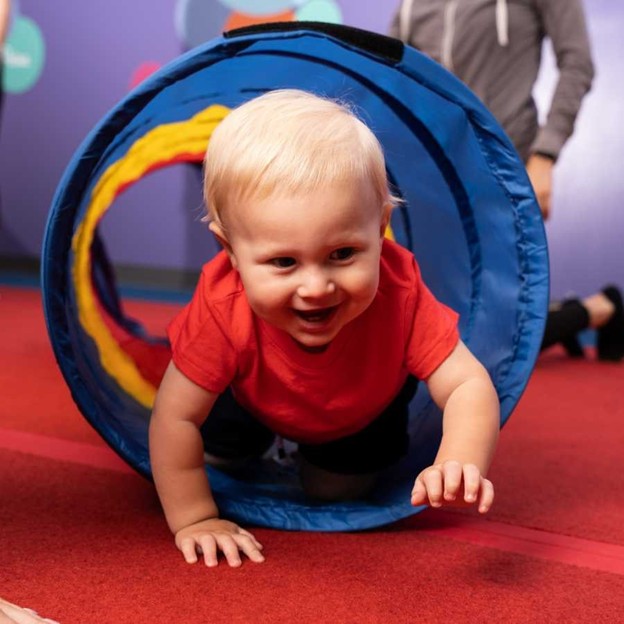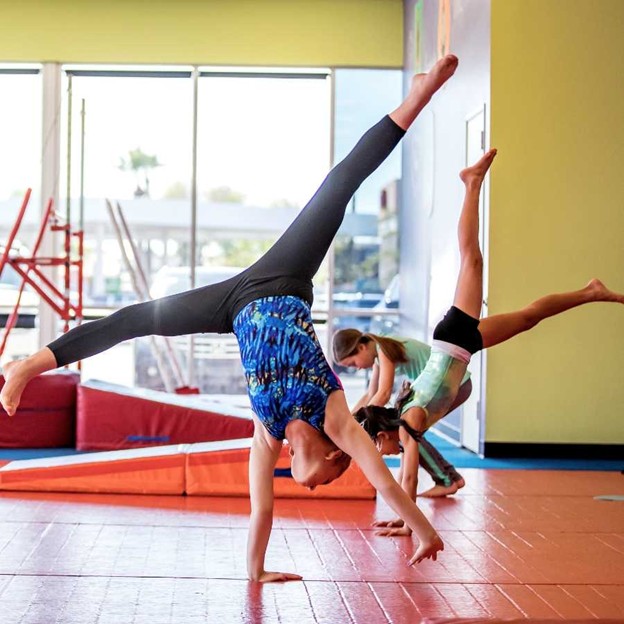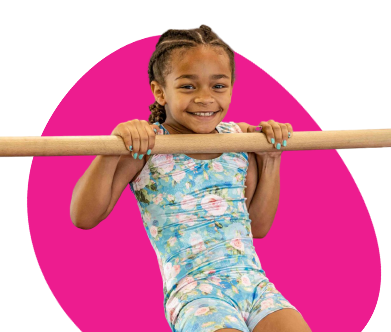Explore how tumbling, balancing, and climbing activities create critical neural pathways that support academic success and emotional regulation in children from infancy through elementary years.

The Movement-Learning Connection: What Science Reveals
Parents often marvel at their children’s physical accomplishments in the gym, but what’s happening beneath the surface is even more remarkable. Each time your child attempts a new gymnastics skill—from cartwheels to complex balance beam sequences, they’re not just developing muscles; they’re strengthening neural pathways that support cognitive development.
Groundbreaking research from Harvard University’s Center on the Developing Child reveals that physical movement experiences during the first decade of life directly shape neural architecture. These early movement patterns don’t just influence athletic ability; they establish foundations for reading comprehension, mathematical reasoning, and emotional regulation.
As developmental neurologist Dr. James Chen explains, “The cerebellum—once thought to control only movement—is now understood to play a crucial role in cognitive processing, attention control, and even language development. When children engage in complex movement patterns through gymnastics, they’re simultaneously developing multiple brain regions.”
Fundamental Movements That Drive Cognitive Growth
Cross-Body Movements: Building Brain Bridges
When your child crawls, skips, or performs gymnastics movements that cross the midline of their body, they’re:
Strengthening connections between left and right brain hemispheres
Developing crucial pathways for reading fluency and mathematical processing
Enhancing coordination between visual perception and physical response
Building the neural foundation for handwriting and fine motor precision
Vestibular Activation: The Balance-Attention Connection
Activities that challenge your child’s sense of balance—like beam walks, hanging exercises, and controlled tumbling—provide powerful benefits:
- Calibrate the vestibular system that regulates attention and focus
- Develop proprioception (body awareness) essential for classroom posture and comfort
- Strengthen neural pathways that filter sensory information and prevent overwhelm
- Build confidence through mastery of increasingly challenging position
Rhythmic Movement: Timing and Sequential Thinking
In early childhood development, the importance of movement plays a key role in building essential cognitive and physical skills. Gymnastics routines that incorporate rhythmic movements help children learn internal timing mechanisms crucial for reading fluency and musical ability, while also enhancing sequential processing skills that support mathematical operations.
These activities promote health and strengthen executive function as toddlers and kids of all ages engage in planned movement sequences.
By recognizing and repeating movement patterns, children boost their working memory, setting a strong foundation for learning. At The Little Gym, we embrace the power of movement-based play to help children grow, develop, and thrive at every age.

The Hidden Connection Between Movement and Emotional Development
Parents are often amazed to discover the profound connection between movement experiences and emotional development. Research from The International Journal of Child Development confirms what many educators have observed: physical activity significantly enhances children’s ability to understand and manage their emotions.
Our structured gymnastics classes and power tumbling programs incorporate elements specifically designed to support emotional intelligence development:
Graduated Challenges: Each skill progression is carefully designed to push comfort zones while ensuring success, teaching children to recognize and manage productive struggle—a first step toward developing healthy emotional behavior.
Environmental Adaptation: Moving through different apparatus stations requires flexible thinking and emotional regulation as children transition between different physical challenges, helping them develop strategies to solve problems in the classroom and beyond.
Collaborative Movement: Partner and group activities develop social awareness and relationship skills through physical cooperation and shared accomplishment, preparing students to interact and participate effectively in the world.
Age-Specific Movement Foundations
Discovery Stage (4-12 months)
Floor exploration, supported rolling, and gentle vestibular stimulation establish primitive movement patterns that form the foundation for all later learning. These exercises help babies develop the brain connections that will eventually support reading, language acquisition, and creativity.
Experimentation Stage (18-36 months)
Independent climbing, beginning balance challenges, and exploratory tumbling develop the risk assessment and spatial awareness that support early mathematical concepts. During this crucial age, children play with movement ideas that build knowledge and understanding of their physical environment.
Refinement Stage (3-5 years)
Structured movement sequences, beginning apparatus work, and multi-step physical challenges build executive function and working memory capacity. Youth at this stage benefit from routines that incorporate jumping, exploring, and beginning somersaults to develop their ability to create and complete tasks.
Mastery Stage (6-12 years)
Complex movement combinations, sustained balance challenges, and multi-element routines strengthen higher-order thinking and metacognitive awareness. Students at this level might track their progress toward participation in competitions, building the personality traits that make a successful athlete.

Experience the Difference Physical Literacy Makes
The movement foundations established through quality gymnastics instruction become the invisible infrastructure supporting your child’s development across all domains. From birth through adolescence, physical activity provides numerous benefits that extend far beyond health alone.
Our specially trained instructors understand not just how to teach gymnastics, but how movement shapes the developing brain. They create a safe environment where learning can occur through fun, engaging activities that address common developmental concerns.
From their first supported somersault to advanced apparatus skills, we guide children through movement experiences that build not just physical capabilities, but cognitive pathways that will serve them throughout life. Families often suggest that the energy and enthusiasm their children bring home from our program transforms their home environment as well.
Ready to see how movement can transform your child’s learning journey? Find a location near you today! Our gymnastics classes for various age groups are tailored to developmental milestones, providing age-appropriate challenges that help your child develop into a well-rounded, healthy individual.

